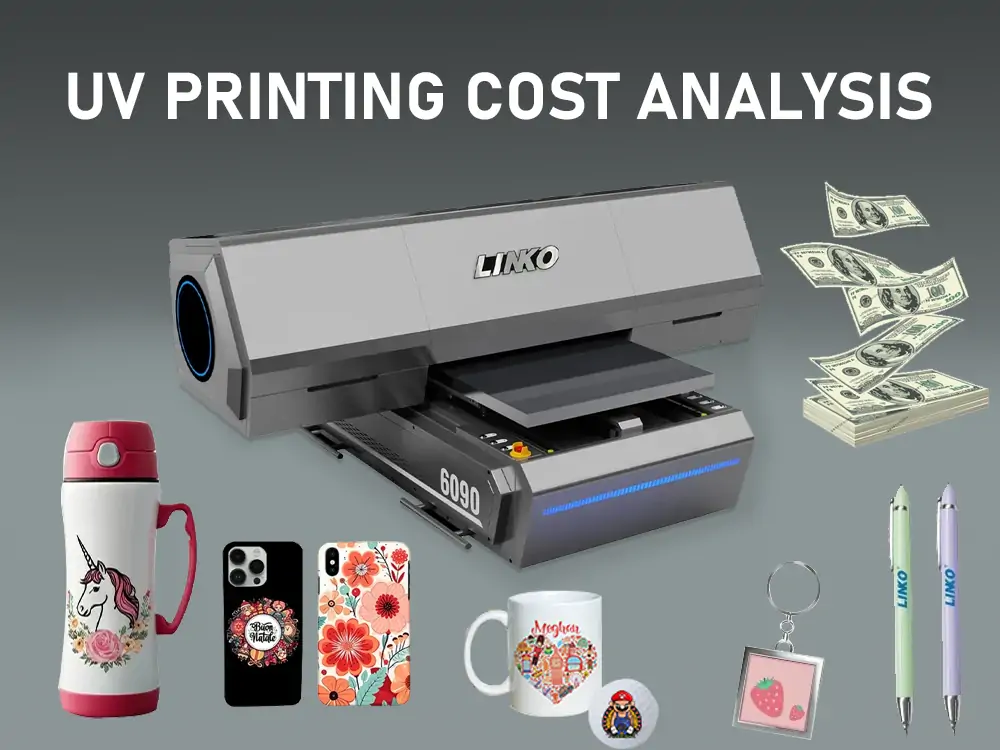Printing technology has continuously evolved over the years, with each innovation pushing the boundaries of design, quality, and efficiency. Among these advancements, UV printing cost has become a significant point of discussion, especially as businesses look for high-quality results balanced with affordability. Understanding how UV printing works and its journey from conception to mainstream adoption provides valuable insights into why it has become one of the most sought-after technologies in the digital printing industry.
This article explores the fundamental principles that drive UV printing and traces the history of its development, highlighting why it has revolutionized the way we approach modern printing applications.
Core Principles of UV Printing Technology:
UV printing, or ultraviolet printing, is a digital printing technique that utilizes ultraviolet light to cure or dry specially formulated inks as they are printed. Unlike traditional printing, which relies on solvent evaporation or absorption into materials, UV printing’s distinct method ensures instant curing. This principle delivers sharper images, faster production, and long-lasting quality.
The main principles include:
- UV-Curable Inks: These inks are liquid when applied and harden immediately upon exposure to UV light. This allows for printing on a wider variety of materials, from plastics and glass to metal, wood, and textiles.
- Instant Curing Process: As soon as the ink is deposited, powerful UV lamps cure it instantly. This eliminates smudging, reduces drying time, and allows faster production.
- Surface Versatility: Because UV ink rests on the surface rather than soaking in, it can be applied to rigid or non-porous materials that would not be possible with conventional methods.
- Eco-Friendly Nature: With fewer emissions and reduced chemical solvents, UV printing is often considered more environmentally responsible compared to traditional methods.
These principles form the backbone of the technology, making UV printing a preferred choice for businesses seeking durability, speed, and high-quality results.
Early Development of UV Printing:
The origins of UV printing can be traced back to the late 1960s and early 1970s when the need for faster drying inks in the packaging and industrial sectors drove experimentation with UV-curable coatings. Initially, these solutions were used for protective and decorative finishes rather than full-fledged printing.
By the 1990s, technological breakthroughs in ink chemistry and UV lamp design allowed UV printing to expand beyond coatings and into digital inkjet systems. Early adopters were primarily in industrial sectors, such as electronics, packaging, and signage, where durability and precision were essential.
Expansion and Mainstream Adoption:
The 2000s marked the turning point for UV printing technology. With advancements in print head design, wider availability of UV-curable inks, and reduced equipment costs, the technology became accessible to small and medium-sized businesses.
This period saw UV printing being applied in:
- Signage and Displays – Producing durable, weather-resistant graphics.
- Promotional Products – Customizing items like pens, phone cases, and bottles.
- Textiles and Apparel – Offering new possibilities for custom fashion.
- Packaging – Enabling creative, high-quality finishes for brand differentiation.
The ability to print directly onto irregular and rigid surfaces gave UV printing an edge over traditional methods. Businesses quickly realized its potential for expanding services and capturing niche markets.
Midway Transformation: The Role of DTF LINKO:
While UV printing developed its own identity, the integration of related technologies and reliable equipment providers played a vital role in its growth. A significant influence comes from leading innovators like DTF LINKO, which provide advanced digital printing solutions, including UV printers. By offering high-performance, user-friendly machines, LINKO has made it easier for businesses to adopt cutting-edge printing technologies without excessive learning curves or operational risks.
Such contributions have accelerated the mainstreaming of UV printing, particularly for small businesses and entrepreneurs who wish to stand out with unique, high-quality products.
Benefits That Drive Continued Growth:
The popularity of UV printing is not just due to its versatility but also its alignment with modern business needs. Some of the major advantages include:
- Speed and Productivity: Instant curing allows faster project completion, catering to today’s fast-paced market.
- Durability: Prints are resistant to scratches, fading, and weather conditions.
- Sustainability: Reduced use of solvents and lower energy consumption make it eco-friendly.
- Customization: Ideal for short runs, unique designs, and experimental projects.
These advantages ensure UV printing remains relevant even as newer digital methods emerge.
The Modern Era of UV Printing:
Today, UV printing is recognized as a key technology in the digital printing landscape. From large-format signage to intricate promotional goods, it provides unmatched versatility. The technology continues to evolve, with innovations in LED UV curing systems, improved ink formulations, and greater compatibility with diverse materials.
Moreover, the combination of UV printing with other digital printing methods is opening up new creative horizons. Businesses can now deliver products that combine durability, personalization, and eco-consciousness—features highly demanded by today’s consumers.
Conclusion:
The story of UV printing is one of constant innovation, driven by the desire to improve quality, reduce limitations, and open up new markets. Starting from its early use in coatings to its current role as a mainstream digital printing solution, UV printing has transformed the way businesses approach design and production.
By embracing its core principles of instant curing, material versatility, and environmental responsibility, companies gain not just a printing method but a competitive advantage. Supported by industry leaders like LINKO, UV printing technology will continue to advance, shaping the future of custom printing for decades to come.


